



Wound Score Comparison among Gestating Sows Housed in Two Different Group Sizes
As Michigan pork producers implement management practices to abide by the established legislative requirements, it is important for them to understand the many factors that can affect decisions about group-housing pregnant sows. Thomas Guthrie (Extension Educator in Jackson, Colorado) and Ronald O. Bates (State Swine Specialist at Michigan State University, MSU) explain these factors in the latest issue of 'MSU Pork Quarterly'.Introduction
Sow gestation housing has received noteworthy attention. In the fall of 2009, Michigan passed legislation (Public Act 117) that amended the Animal Industries Act (Michigan Public Act 488 of 1988) to disallow housing gestating sows in individual stalls. Therefore, in Michigan, elimination of sow gestation stalls is set to become law in 2020. Producers currently housing sows in gestation stalls will be required to re-evaluate their management practices of gestating sows and must comply with the legislation by 1 April 2020.
Within the legislation, sows that have been confirmed pregnant must be able to turn around freely, lie down, stand up and fully extend their limbs. Sows can be housed in stalls for seven days before their expected farrowing date, through farrowing and lactation and after weaning up until the time confirmed pregnant. Housing gestating sows in stalls is allowable for veterinary examination, testing or treatment as directed by a veterinarian. It is common knowledge that fighting occurs among sows when mixed and/or reassigned in pen housing situations.
Figure 1. Sow group size
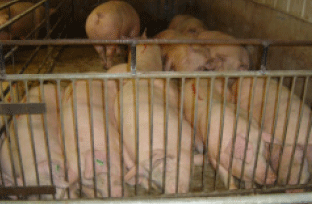
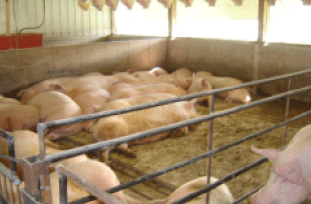
Objective
The objective of this study was to compare wound scores among gestating sows housed in two different group sizes on a commercial farma.
Materials and Methods
Groups of 10 (small) or 20 (large) sows provided 15.2 square feet of floor space per sow, at placement were
compared across three replicates (n=90). The small group pen dimension was 8 feet by 19 feet (Figure 1a) while the
large group pen dimension was 16 feet by 19 feet. (Figure 1b).
Gestating sows were fed three times per day utilizing automatic feed drops (Figure 2a) spaced 2 feet across each
respective pen with a targeted amount of 4lb of feed per sow delivered daily. Feed was dropped onto an 8-foot wide concrete pad located in the center of the pen spanning the length of the pen (Figure 2b).
Sows were
evaluated for body condition score (BCS) before placement into pens and those with similar BCS were grouped
into pens. Placement occurred at six days of gestation. Wound scores and BCS and were evaluated on days 0, 7,
30, 60 and 90 after placement.
Wound scores of the neck, shoulder, side, rump were recorded on
a scale from 0 to 5, with 0 representing no wounds, 1) 1 to 20 per cent of body area in wounds, 2) 21 to 40 per cent, 3) 41
to 60 per cent, 4) 61 to 80 per cent and 5 representing more than 80 per cent of the area covered in wounds. Vulva
scores were recorded on a 0 to 3 scale with 0 indicating no wounds; 1 - minor wounds; 2 - moderate and 3 -
extensive wounds.
Figure 2. Sow feeding equipment
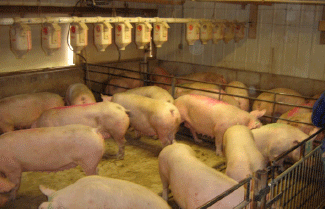
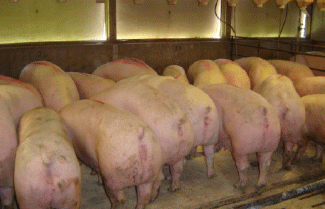
Results
There were significant differences in shoulder wounds (P<0.01), side wounds (P<0.001) and rump wounds (P<0.05) with gestating sows housed in the larger groups having increased odds of wound occurrence (Figure 3). Additionally, the least squares estimates of sow completion percentage and final BCS are located in Table 1.
Figure 3. Odds ratioa for sows in large pens to have increased wound scores
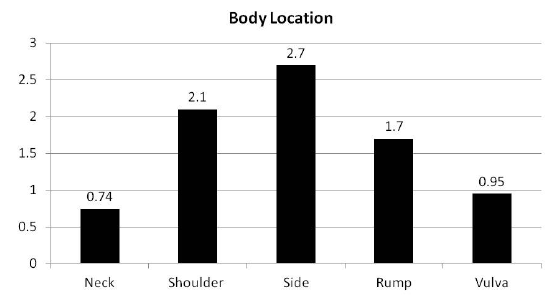
a Odds ratio greater than 1.7 indicate that sows in large pens have a greater chance (P<0.02) of higher wound scores than sows in small pen.
Discussion and Observations
It is apparent that gestating sows housed in larger
groups in this study had a greater occurrence of
wounds.
Interestingly, in each respective replication one individual sow had to be pulled from the large pen around day 60 due to significant injuries imposed
by pen mates. More aggressive sows were observed chasing more submissive sows throughout the larger pen.
In contrast, it appeared that more submissive sows in the smaller pen were able to elude a more aggressive
sow. At times, more aggressive and dominant sows would dominate the concrete feeding pad as illustrated
in Figure 4a. However, within the first week of being mixed, sows exhibited feeding behaviour as illustrated in
Figure 2a. Moreover, feed consumption by individual sows creates management challenges when housing gestating
sows in groups.
Exploring feeding methods to ensure that all sows are receiving appropriate amounts of
feed will be critical when managing body condition score of individual sows. Figures 4b and 4c illustrate a few
of the challenges encountered with this study.
Figure 4. Observations
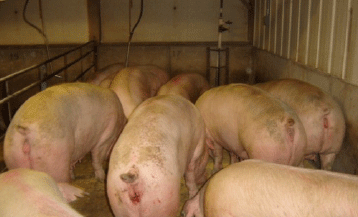
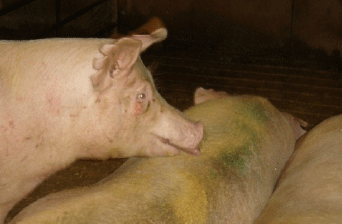

Table 1. Least-square estimates of sow completion percentage and final body condition score (BCS)

Implications
As Michigan pork producers implement management practices to abide by the established legislative requirements,
it will be imperative for pork producers and employees of these respective operations to be aware and
knowledgeable of the many potential factors that may play a role when making decisions in regard to gestating
sows in groups.
October 2012








